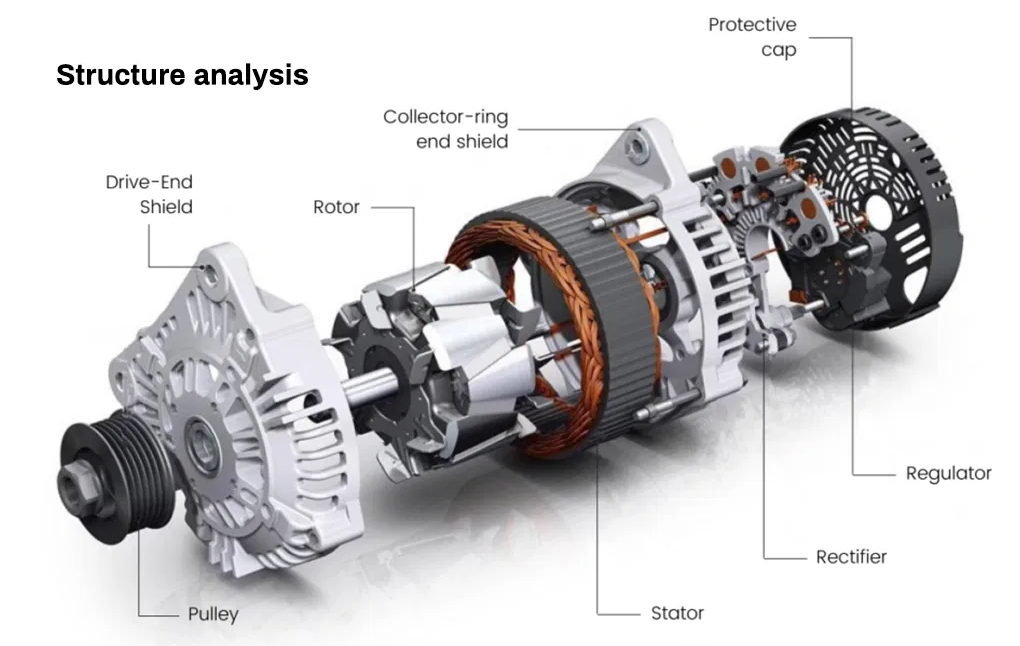Main structure of generator
Jan 22,2025
Rotor: The rotating part of the generator, including magnetic poles, excitation windings, slip rings and rotor shafts.

Rotor: The rotating part of the generator, including magnetic poles, excitation windings, slip rings and rotor shafts. In a DC generator, the field winding is energized by an external power source to generate a magnetic field; while in an AC generator, the rotor can be a permanent magnet or by electromagnetic excitation.
Stator: A fixed component that surrounds the rotor and consists of a stator core and coil windings. When the magnetic field in the rotor cuts the stator winding, an alternating induced electromotive force is generated in the stator winding, which in turn forms an alternating current.
Rectifier (part of the generator is equipped with): In the alternator, the function of the rectifier is to convert the alternating current generated by the stator winding into direct current to meet the needs of certain equipment.
Voltage regulator: In order to maintain the stability of the generator output voltage, the voltage regulator will automatically adjust the excitation current according to the change of the output voltage, so as to control the generator voltage within a set range.
End caps and brush assemblies: End caps support the rotor, stator and other components and provide the necessary sealing and protection. The brush is in contact with the slip ring and is responsible for conducting the excitation current to the field winding of the rotor.
PREVIOUS:




